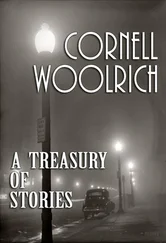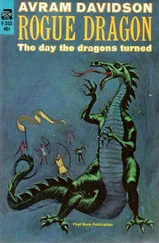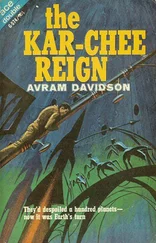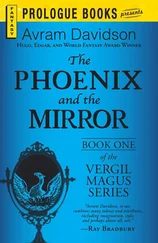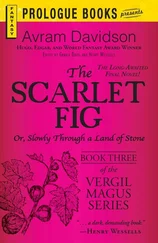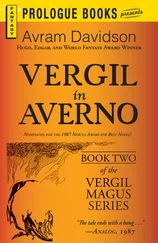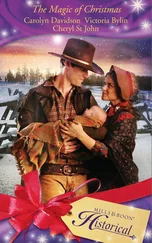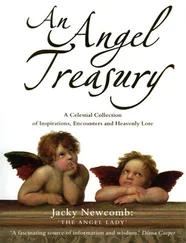Maybe.
At the other end of that room was another door and behind that other door was another room. And in that other room was…
… something else…
That other room was partly crammed with an insane assortment of machinery and allied equipment, compared to which Don Eliseo’s more perfect make-and-bake tortilla engine, with its affinities to the perpetual motion invention of one’s choice, was simplicity. The thing stood naked for Fred’s eyes, but his eyes told him very little: wires snaked all around, that much he could say. There was a not-quite-click, a large television screen flickered on. No. Whatever it was at the room’s end, sitting flush to the floor with a low, chicken-wire fence around it, it was not television, not even if Abelardo had started from scratch as though there had been no television before. The quality of the “image” was entirely different, for one thing; and the color, for another, was wrong … and wrong in the way that no TV color he had ever seen had been wrong. He reached to touch the screen, there was no “screen,” it was as though his hand met a surface of unyielding gelatin. The non-screen, well, what the hell, call it a screen, was rather large, but not gigantically so. He was looking at a savannah somewhere, and among the trees were palms and he could not identify the others. A surf pounded not far off, but he could not hear it. There was no sound. He saw birds flying in and out of the trees. Looking back, he saw something else. A trail of broken bread through the room, right up to the, mmm, screen. A silent breeze now and then rifled grass, and something moved in the grass to one side. He stepped back, slightly. What the hell could it mean? Then the something which was in the grass to one side stepped, stiff-legged, into full view, and there was another odd, small sound as the thing — it was a bird — lurched through the screen and began to gobble bread. Hopkins watched, dry-mouthed. Crumb by crumb it ate. Then there was no more bread. It doddled up to the low fence, doddled back. It approached the screen, it brushed the screen, there was a Rube Goldberg series of motions in the external equipment, a sheet of chicken wire slid noisily down to the floor. The bird had been trapped.
Fred got down and peered into the past till his eyes and neck grew sore, but he could not see one more bird like it. He began to laugh and cry simultaneously. Then he stood up. “Inevitable,” he croaked, throwing out his arms. “Inevitable! Demand exceeded supply!”
The bird looked up at him with imbecile, incurious eyes, and opened its incredible beak. “ Doh- do,” it said, halfway between a gobble and a coo. “Doh- do. Doh- do .”
Afterword to “Full Chicken Richness”
BY GARDNER DOZOIS
And, now that I can say this without ruining the ending, I should also point out that this is one of only two science fiction stories I can think of where the plot centers around dodoes. The identity of the other story — not by Avram — I leave as an exercise for the reader.
The Hills Behind Hollywood High
INTRODUCTION BY GRANIA DAVIS
Hollywood was my hometown, and Hollywood Boulevard was my Main Street. I graduated from Hollywood High. Hollywood was a company town, and the big film and TV studios were The Company.
Avram Davidson lived in Hollywood during the placid 1950s. He worked as a night clerk in a cheap hotel off Vine Street, to support his writing habit. Every night he saw the has-beens and the rejects, the character actors and the genuine characters. From our shared experiences, this story was born, about the sacrifices that go on behind the scenes.
I collaborated with Avram Davidson on four short stories, and on the last novel published during his lifetime, Marco Polo and the Sleeping Beauty. We were working on a dark fantasy novel, Boss in the Wall, just before he passed on.
I’ve been asked how I could possibly imitate Avram Davidson’s style. The answer is easy. Nobody can imitate Avram Davidson’s style. All I could do was create a framework for his glittering prose, like a jeweler setting gems. There are many Avram Davidson gems in this droll story.
THE HILLS BEHIND HOLLYWOOD HIGH
BY AVRAM DAVIDSON AND GRANIA DAVIS
THAT THERE ARE HILLS behind Hollywood — that is, behind Hollywood Boulevard and Hollywood High School — is perhaps not universally known. Smog often hides them, and tourists have no reason to look for, let alone explore, them. They remain unnoticed by the valley commuters who flood past them twice daily. Fish, it is said, do not see the water in which they swim, nor birds observe the winds which bear them.
In the late thirties, according to Life magazine, that omniscient observer of the world scene, the students of Hollywood High School were the most beautiful in the world, being the issue of beautiful young men and women who had come to Hollywood in the twenties seeking movie stardom and, although they had failed— because they had failed — stayed on in Hollywood doing Something Else, anything else.
Success would have removed them to Beverly Hills or Brentwood — failure prevented their return to Cowpat, Kansas; Absalom, Alabama; or Pretty Bird, Idaho. (“Diddunt make it in thuh pitchers, huh, Jeff? Huh, Jean? Huh huh haw!”) So there they stayed, frying hamburgers on Hollywood Boulevard, pumping gas or sacking groceries on Vine. Marcelling waves or setting perms on Cahuenga, clipping hedges or mowing lawns on Selma. Or, if exceptionally lucky, working in studio jobs on the other side of the cameras.
Hollywood was their hometown now, just as Cowpat, Absalom, or Pretty Bird had been. No more profitable maybe, but lots more interesting. And the beautiful failures met and married other beautiful failures — and together begat beautiful babies, who their parents hoped would Make It In The Movies. Make It Big.
“ What ? Television, what is that ?”
It was in the mid-fifties. The huge red juggernaut trolley cars still rolled down the alley right of way. Vibi’s restaurant still advertised Breakfast Served 24 Hours a Day , but did not advertise the answer to the old-timers’ eternal question: Was “Vibi” Vilma Bankey or was she not, and if not, who was she? Because the old-timers knew she was some movie star from the old days.
As to who was the little old lady in the short black velvet tunic and the sandals cross-strapped halfway up her shrunk shanks, nobody had an answer, or knew why she carried a cane-length silver wand: an ancient fairy in the ancient meaning of the word, she stepped her light-fantastic way and bothered no one.
Dorothy, Angela, and Luanne giggled when they saw her — but only after she had moved well on — as they giggled in confused respect when passing the old dark house smothered in foliage, which was the home of the ninety-odd-year-old widow of L. Frank Baum, the original Wizard of Oz . The original house where he had dreamed his strange — and strangely profitable — dreams.
Sometimes the three girls went to buy snacks at the all-night Ranch Market on Vine, and sometimes they went there just to stare at the odd types who went there to stare at the other odd types. Once they heard a squat woman who looked as though Central Casting had selected her as a Ma Kettle standin say to her equally typical Farmer-Husband: “Land sakes, Pa, what is this?”— holding up the scaly green fruit of the cherimoya-tree — and Pa had said: “Looks like a armadillo egg to me, Ma!”
Читать дальше

